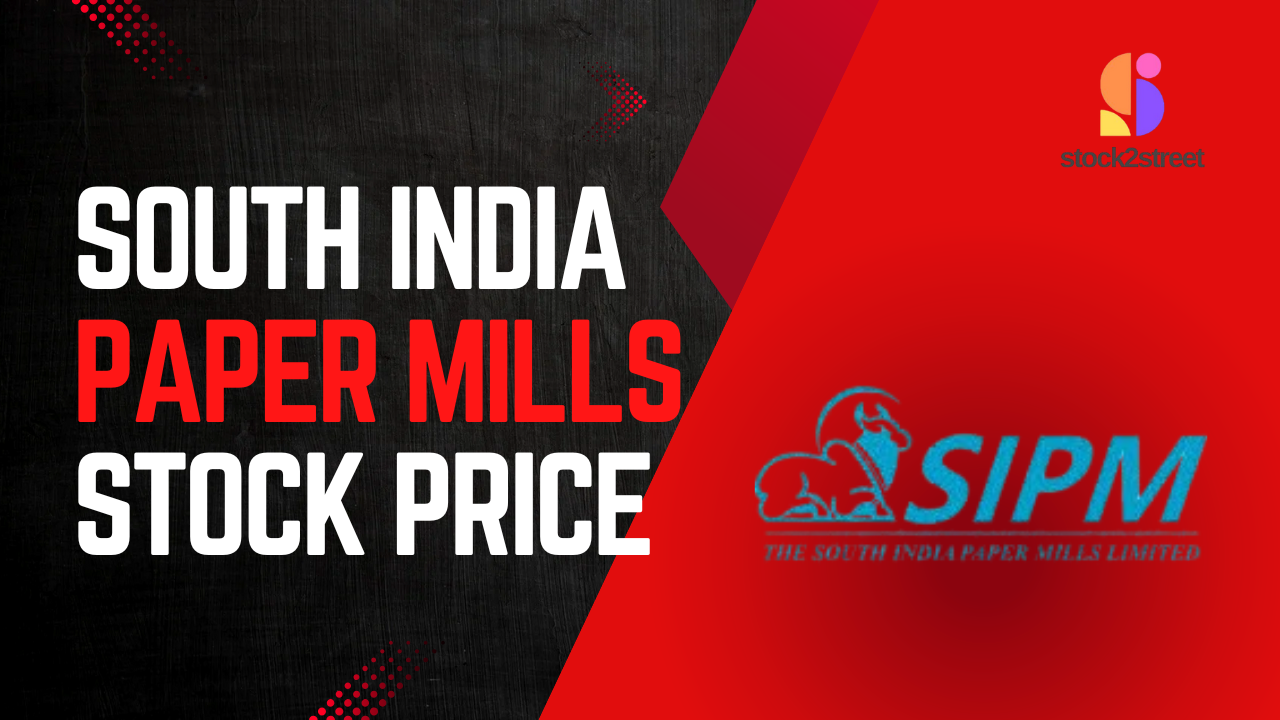South India Paper Mills (BSE: 516108 / NSE: SIPAPER) posted a tangible pick-up in October 2025 following the announcement of a return to profit in Q2 FY26. On intraday action in the vicinity of the Q2 announcement the stock surged into the high-80s (₹80–₹95 levels) post the numbers; its 52-week range of trade is around ₹65 to ₹118, which reflects significant volatility in the past year. Also you can read about What are the upcoming IPO in 2025

What drove the price
The direct spur to the recent rally was the Q2 (quarter ended Sept 30, 2025) earnings announcement of a turnaround: consolidated net profit of approximately ₹2.81 crore compared to a loss in the year-ago period, and revenue growth of around 9–10% year-on-year to ~₹111.5 crore. Markets responded positively to the return to profitability and better margins — headlines mentioned share price increases of double digits on the earnings day. Those operational efficiencies and the shock of returning to profit account for the steep short-term price movement. and also you can read about Yash Highvoltage Ltd
Under which hipaa exception do drivers
Two demand/pricing dynamics are in play.
First, the company’s core products (paper, board, cartons) experienced steady offtake improvement in recent quarters the Q2 volume and revenue numbers indicate modest recovery compared to the previous year. Secondly, industry pricing aided: domestic price support for virgin packaging boards (VPB) recent policy measures including a Minimum Import Price on a few grades cut down on cheaper import competition and enabled domestic mills to pass through higher prices during the festive period. That macro/industry context tends to favor mid-sized domestic paper manufacturers like South India Paper Mills. and also you can read South India Paper Mills Share Price
Fundamentals of financial management
Quarterly results depict enhancing operating profitability: Margins on EBIT and EBITDA widened in the most recent quarter reported, while PAT was once again positive (PAT ₹2.8 crore in Q2).
Trailing metrics reflect volatility (intermittent losses in previous quarters), but the last few quarters signal improvement in terms of topline expansion and operating leverage.
Balance-sheet indicators in public filings and aggregate data (improving cash from operations, some financing outflows) indicate that the company is stabilizing its cash flows, while working-capital intensity remains normal for the industry.
Master of valuation in india
Given that South India Paper Mills is an industrial small/mid-cap company, traditional headline multiples vary considerably with quarterly numbers. Price-to-earnings and other multiples appear high in rallies (on modest absolute profits), and the 52-week high/low range indicates how sentiment swings can drive valuations up or down. The investors pricing the stock need to balance
(a) profitability consistency (persistent margin improvement),
(b) capex or modernization intentions,
(c) balance-sheet leverage
all of which significantly influence fair-value multiples for pulp & paper companies.
Key risks that could push the price down
- Input-cost uncertainty: pulp, recycled fibre and power prices can squeeze margins in no time.
- Demand weakness: a decline in FMCG, pharma or e-commerce packaging demand would curtail offtake and price realisation.
- Policy or regulatory shocks: although import curbs have lately supported prices, reversals in the opposite direction or trade tensions would undo the benefit.
- Execution / working capital: small mills can face stress if receivables or inventory build up, or if capex needs rise unexpectedly. Recent tax/raid stories in the broader paper industry show regulatory overhangs can also create sectoral nervousness.
Catalysts & what to watch next
- Next quarterly results: confirm whether Q2’s profit is sustainable or a one-off. Continued margin expansion and cash-flow improvement would support higher prices.
- Volume trends: observe production of watches and sales of finished products (monthly/quarterly) to determine whether demand is across the board.
- Input costs & industry pricing: observe VPB prices, recovered paper/pulp prices and movements in import policy (MIP windows) — these significantly impact margins.
- Corporate actions: any debt refinancing, capex, or strategic partnerships will affect medium-term valuation. Company announcements and BSE filings are the best places to get these information.
Bottom line
The recent rally in South India Paper Mills’ share price is a reflection of an underlying improvement in the recent quarter: return to profitability, increased revenues and recovery in margins.
That provides a reasonable foundation for a higher share price — but the company still has its vulnerable areas: input-cost fluctuations, cyclicality of demand, and balance-sheet/working-capital risks that are inherent to the paper business.
For investors, the key questions are whether Q2 profitability is sustained and whether industry volumes and pricing remain firm.
If so, the stock has space to put gains into perspective; otherwise, volatility should prevail.
